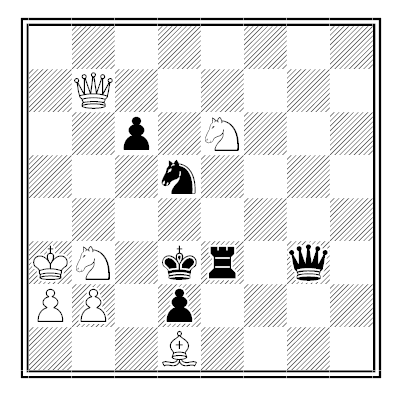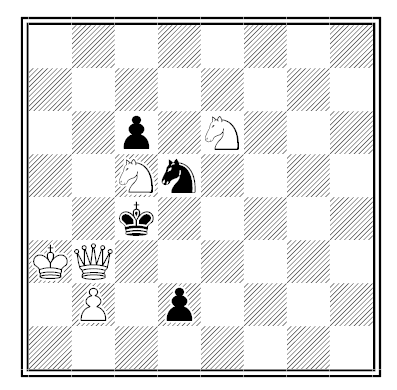Vincent Price and Christopher Lee have the same birthday — May 27.
The Lying Nun

Canada saw a sensation in 1836 — a woman named Maria Monk claimed to have been a nun in a Montreal convent where priests from the nearby seminary would enter through a secret tunnel, force sex on the terrified nuns, and dispose horribly of any resulting children:
[Father Larkin] first put oil upon the heads of the infants, as is the custom before baptism. When he had baptized the children, they were taken, one after another, by one of the old nuns, in the presence of us all. She pressed her hand upon the mouth and nose of the first so tight that it could not breathe, and in a few minutes, when the hand was removed, it was dead. She then took the other and treated it in the same way. No sound was heard, and both the children were corpses. The greatest indifference was shown by all present during this operation; for all, as I well knew, were long accustomed to such scenes. The little bodies were then taken into the cellar, thrown into the pit I have mentioned, and covered with a quantity of lime.
Awful Disclosures of Maria Monk became a bestseller, but an investigation showed that the whole thing had been a fake; Monk had apparently never even visited the convent. She fled to Philadelphia, wrote an unsuccessful sequel, had a child out of wedlock, and died in 1839.
Math Notes
45 + 15 + 55 + 05 = 4150
Round Trip
Dave Kunst walked around the world. In June 1970 the county surveyor set out from Waseca, Minn., with his brother John, $1,000, and a mule with the portentous name of Willie Makeit. The brothers walked to New York, flew to Portugal, and had got as far as Afghanistan when John was shot by bandits. Dave recovered from his own wounds and resumed the journey, flying from India to Australia when the Soviet Union denied him entrance. His third mule had died when a Perth schoolteacher agreed to haul his supplies with her car while he walked alongside. He finished the trip in October 1974, having walked 20 million steps and worn out 21 pairs of shoes.
He married the schoolteacher.
Unquote

“He was a very valiant man who first adventured on eating of oysters.” — James I
Rimshot
A Country Farmer, riding to a merry Meeting on an easy Horse, drank very plentifully ’till Night came on, and his Senses fled. One of the Company resolved to pass a Joke upon him, by perswading the rest to mount him on his Horse, with his Face to the Tail, and turn the Horse loose, who knew very well the Way Home. So up they mounted him, and away went the Horse a Foot-pace, ’till the Farmer fell fast asleep. In an Hour’s Time the Horse was at Home, and presently fell a neighing. His Wife came with a Candle in her Hand and, seeing her Husband in that Condition, began to take on bitterly, and waking him, told him the Greatness of his Sin, &c. Upon which he rubs his Eyes; and, looking about, cries out in a great Passion, Puh! hold your Tongue, Woman: Nothing vexes me so much, as that the plaguy Rogues should cut my Horse’s Head off.
— The Jester’s Magazine, April 1766
Urban Planning
The city of Buenos Ayres, S. A., has received a singular proposition from two German mechanical engineers. They offer to cover the city with a huge umbrella, the base of which is to be 670 feet in diameter, the height 1500 feet, ribs of cast-iron 31 inches in circumference and 8 feet apart, and lining of wrought-iron one and a half inches thick. The great thing when raised will be one mile and a half wide. Around it will be a canal communicating with the Plate River, to carry away the water that might overflow the city. The work is estimated at the modest sum of $5,750,000.
— Albert Plympton Southwick, Handy Helps, No. 1, 1886
Trivium
Amsterdam, Antwerp, Athens, Berlin, Cairo, Dresden, Dublin, Geneva, Lisbon, London, Marseilles, Milan, Moscow, Rome, Seville, Toronto, and Warsaw … are all towns in Ohio.
The Potsdam Giants
Friedrich Wilhelm I believed in stretching his military — when the Prussian king took the throne in 1713, he founded a special infantry regiment made up of taller-than-average soldiers.
“The men who stood in the first rank in this regiment were none of them less than seven feet high,” wrote Voltaire, “and he sent to purchase them from the farthest parts of Europe to the borders of Asia.” The diminutive king once told a French ambassador, “The most beautiful girl or woman in the world would be a matter of indifference to me, but tall soldiers — they are my weakness.”
They would have made an impressive force on the battlefield, but the “long guys” never saw action — and when Friedrich died in 1740 the crown prince dismissed the regiment.
War

By Charles Tomlinson. White to play and mate in 4 moves, giving check on every move and forcing Black to do the same.

